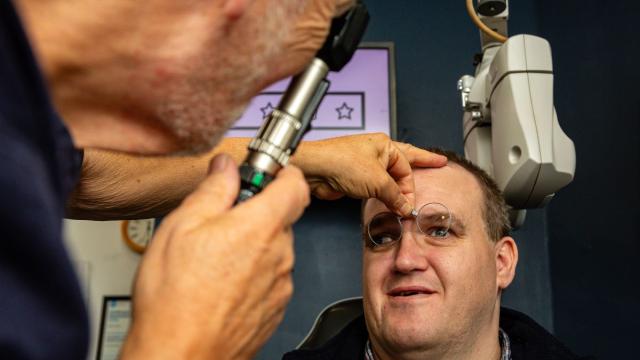
The Bradford Visual Function Box – a quick guide
 By Professor Rachel Pilling and Caroline Rawse
By Professor Rachel Pilling and Caroline Rawse
The Bradford Visual Function Box (BVFB) was developed in response to our experience of testing children with complex needs who find it difficult to engage with traditional tests. It’s simple, quick, portable and adaptable for use with children and adults with a wide range of abilities. We believe that if we are to help people who have difficulty seeing, we must first be able to understand their functional vision – what they see, where they see it and how they see it.
But it’s not just eye care professionals who need to know this: For families, teachers and carers to understand how to support someone with a visual impairment, they also need to understand the ‘what, where and how’.
How does the Bradford Visual Function Box help?
The BVFB helps us show in a simple and clear way what size objects a person can see, and where it must be positioned so that they can see it as easily as possible. However, it’s important to note that the BVFB is not a test of visual acuity and cannot be converted to a particular grating or optotype size.
The findings from the clinical study
We tested the BVFB in special schools with 22 children who had a range of visual abilities. Overall, the intertester reliability was good (K=0.768). We found that for 15 children (mainly those with good vision - able to see objects smaller than 3cm) two independent testers found the same child gives the same result on more than one occasion.
For children with low vision or a visual impairment (able to see objects larger than 5cm), the results were more variable – one tester might find the child saw an object 1 or 2 sizes larger than the other tester. This fits with what we know about the variability of vision in children with cerebral visual impairment.
We also found that the BVFB can help demonstrate vision in almost every child (almost 98%) we assess. An analysis has also shown that if we follow children through until they are able to participate in formal visual acuity testing, the BVFB was correct in predicting those children who would develop normal vision and those who would continue to have visual impairment.
Read the full study here (please note, you can read the summary for free, but the full study is behind a paywall).



